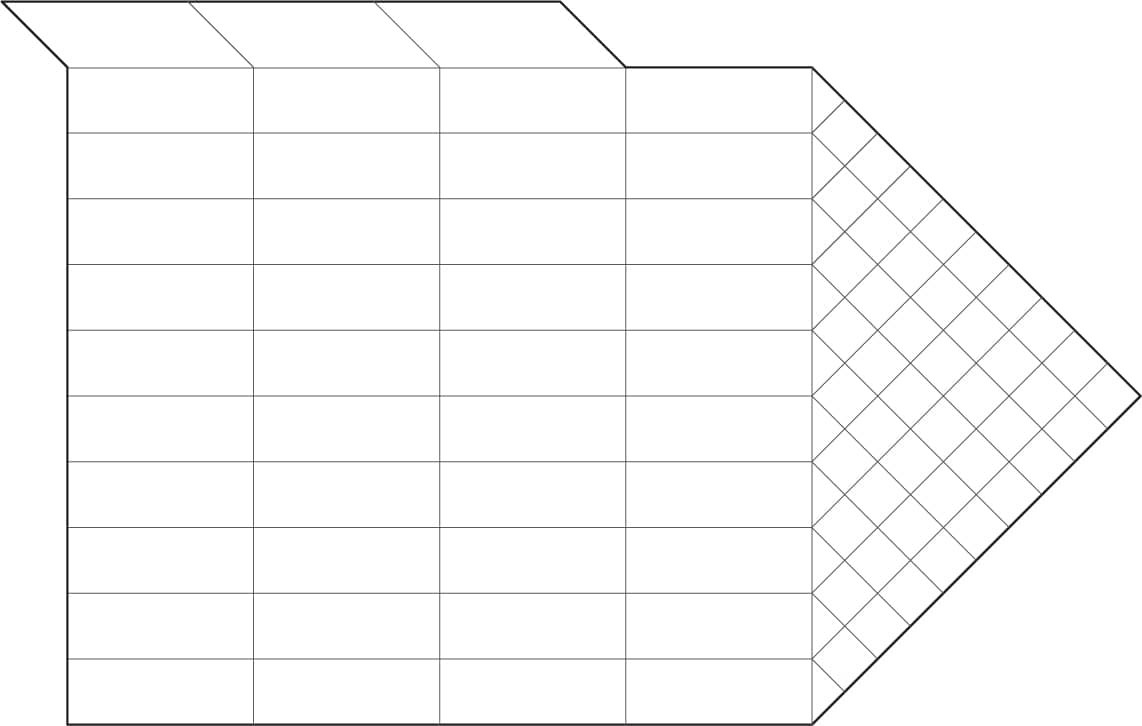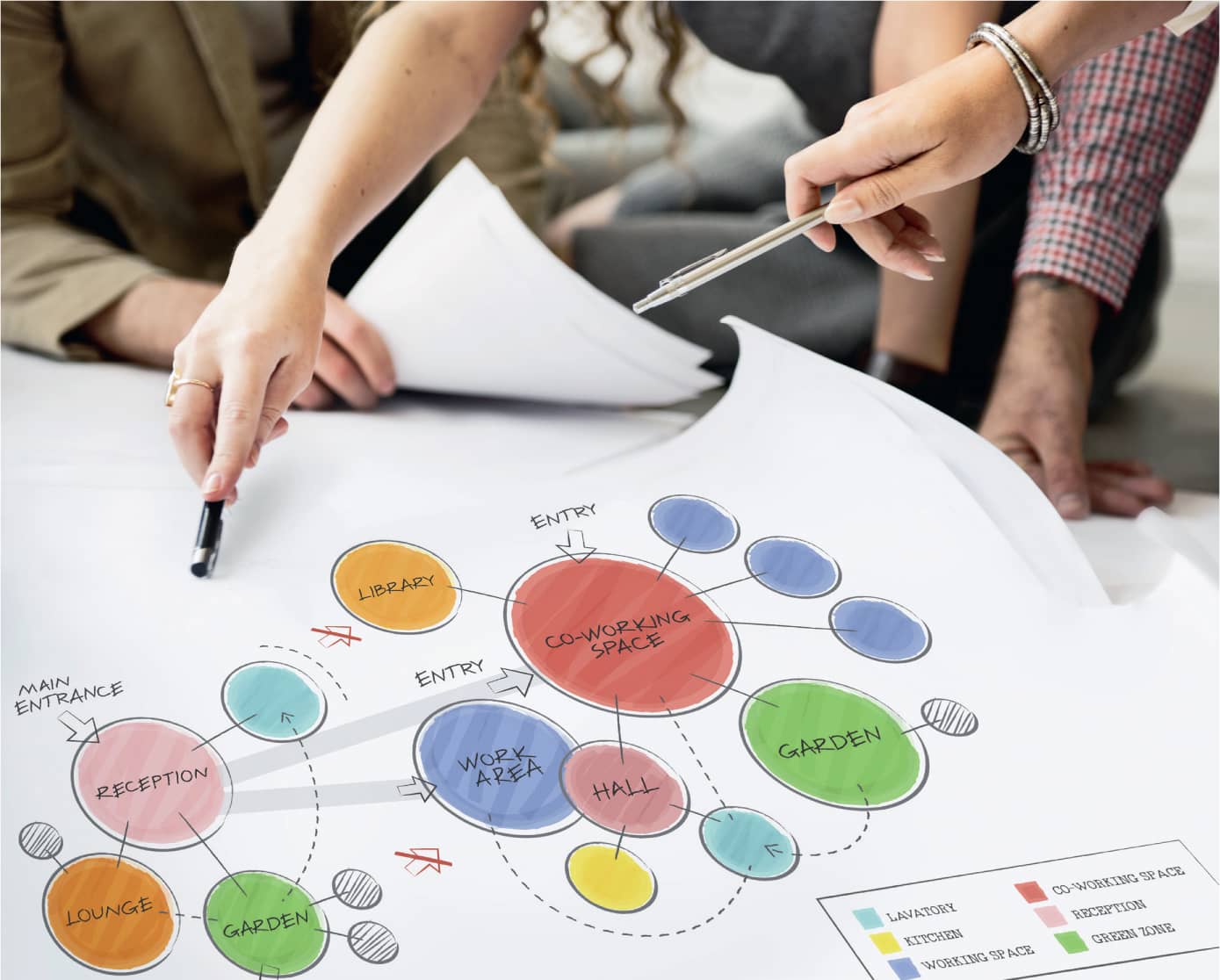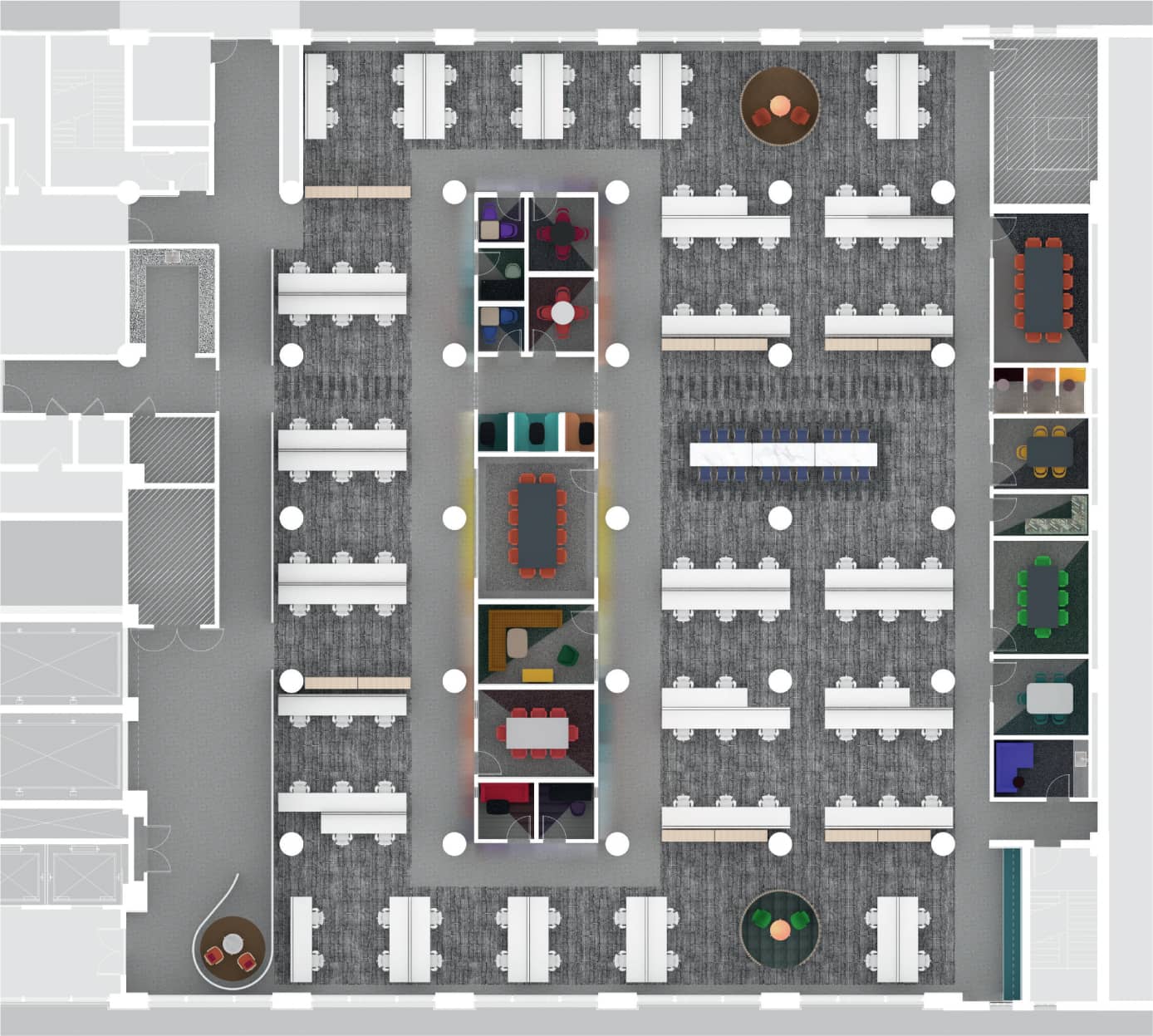04 Adjacency
The system for determining how spaces relate to each other.
There are many ways to develop plans that allow for natural pairings of spaces according to their spatial relationship.
In the predesign phase, space planning is critical to ensure that the flow of a space is maximized and that routes are efficient. This phase is analytical and iterative. Based on conversations with a client or client group, there are several methods that can be used to develop adjacencies. The process is based on trial and error—some elements that appear to have requirements that they be near each other may not end up together based on this exercise.
There are several ways to assess adjacency needs, and all are affected by the physical space of a project. A list of these needs can include the following working needs, adjacency to natural light, acoustic qualities, access to specialized equipment or water, privacy, accessibility or sustainability needs, and maintenance.
Adjacency Matrix
A format that takes all of the parts of a program and stacks them vertically. A diagrid then connects them together. The designer assigns levels of connection (color dots or numbers) where the programs meet. This allows for quick visualization of adjacency needs.

Bubble Diagrams
A series of quick sketches—usually drawn by hand—that lay out visually the results of the adjacency matrix. Many options should be tested and evaluated; the most successful of which are then brought forward to the next phase of plan development.

Sketch Plans
Using the the bubble diagram alongside with space requirements, sketches (with or without furniture) and drawings begin to test the needs within the confines of the project.

